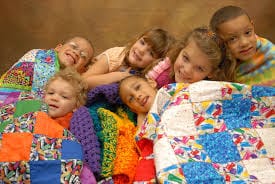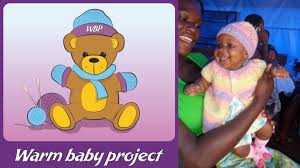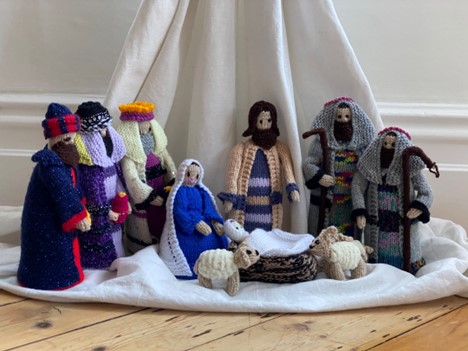Project Linus has made a remarkable difference by donating over 8 million blankets since the mid-1990s.
This shows how knitting for charity creates meaningful change in people’s lives.
Charitable knitting initiatives continue to help communities of all sizes – they comfort breast cancer survivors and keep homeless youth warm during winter.
Knitting for charity gives both experienced knitters and beginners a chance to use their skills to help others.
This piece will help you get started with charitable knitting by showing you how to find local charities and select meaningful projects that align with your abilities and interests.
Getting Started with Charity Knitting

Let’s discuss what you need to know before starting your charity knitting experience. Most organizations have guidelines about materials and care instructions that we should follow.
Your best yarn choices will be acrylic and wool blends. These materials need to be:
- Fragrance-free and smoke-free
- Machine washable and dryable
- Free from pet hair and dander
- Soft enough for sensitive skin
On top of that, it helps to connect with local hospitals, shelters, and hospices to learn about their specific needs. Some places ask for dark, muted colors in adult items. Others prefer bright, cheerful colors for children’s projects.
Your knitted items should be washed and dried before donation to keep them safe and useful. Many hospitals want baby items washed in gentle detergent. Remember that dryer sheets irritate sensitive skin, so it’s best to skip them.
New knitters in our charitable community can start with simple projects like scarves, hats, and blanket squares. As your confidence grows, you can create more complex items like gloves and mittens that shelters always need.
Finding the Right Knitting Charities Near You
Want to share your knitting skills with those in need? Let’s find the perfect charitable organization to donate your handmade creations.
The best place to start is right in your neighborhood. Here’s where you can reach out:
- Local hospitals and cancer centers
- Homeless and women’s shelters
- Animal shelters and wildlife centers
- Churches and community centers
- Nursing homes and hospice facilities
Many 15-year-old organizations welcome knitters worldwide. For instance, Madhatter Knits creates hats for premature babies in Neonatal Intensive Care Units to give warmth and comfort to these tiny fighters.
The Knitting Guild Association collaborates with Warm Up America to distribute handmade blankets and scarves to needy communities.
Checking any charity’s legitimacy should be your top priority. Review their social media presence, website, and status as a charitable organization.
Each organization’s specific guidelines need careful attention. Some charities need specific yarn types or have detailed washing instructions for donated items.
Searching for the perfect charity match becomes easier when you use specific terms like “knitting charity near me” or ask local yarn stores for suggestions.
Local craft groups often create items throughout the year for various causes, from mitten trees to scarves in the park.
Popular Charity Knitting Projects



Knitting needles can create some of the most influential projects to help others.
The UK needs warm clothing for about 60,000 premature babies annually, making preemie items vital to our cause.
These items top our most-needed list:
- Preemie Care Items: Cardigans, blankets, hats, and bonding squares
- Cancer Care Comfort: Soft beanies and blankets for chemotherapy patients
- Homeless Support: Dark-colored scarves, hats, and warm blankets
- Animal Shelter Items: Cozy blankets for pets awaiting adoption
Knots of Love has distributed over half a million handmade items, creating remarkable change.
Small items can make a big difference, too.
Madhatter Knits explains their hats’ role in maintaining babies’ body temperature in NICUs. To avoid drawing attention, homeless people prefer plain, muted colors, mainly black.
We craft hope through these projects, not just warm items.
Knots of Love’s monthly distribution of over 4,000 beanies and blankets shows how our knitting touches thousands of lives.
Conclusion
Charitable knitting offers a meaningful way to share warmth and hope with people who need it most.
Organizations like Project Linus and Knit the Rainbow show how simple stitches become life-changing gifts.
These items help premature babies, cancer patients, and homeless individuals in communities everywhere.
Your charitable knitting begins with a few key guidelines. You must choose proper materials and follow specific washing instructions that match local needs. Tiny hats for preemies or warm scarves for homeless shelters can make someone’s life better.
Knots of Love distributes thousands of items monthly, which shows how individual contributions create real change. We might work alone with our needles, but we belong to a big community of crafters who turn creativity into compassion.
Each stitch makes a difference. Some crafters make complex blankets while others create simple hats – both bring comfort to someone in need.
Now is the time to pick up our needles and join this heartwarming movement that turns yarn into hope, one project at a time.
FAQs
Q1. What are some popular charity knitting projects?
Popular charity knitting projects include baby items like hats and blankets for premature infants, warm accessories like scarves and hats for homeless shelters, and comfort items such as soft beanies and blankets for cancer patients undergoing chemotherapy.
Q2. How do I choose the right yarn for charity knitting?
When knitting for charity, opt for acrylic or wool blend yarns that are machine washable, dryable, and free from fragrances or pet hair. Choose soft yarns suitable for sensitive skin, and consider the specific requirements of the charity you’re donating to.
Q3. How can I find reputable knitting charities to donate to?
Research local hospitals, shelters, and community centers in your area. You can also look for established national organizations like Project Linus or Knit the Rainbow.
Verify the legitimacy of charities by checking their social media presence, website, and legal status as a charitable organization.
Q4. Is it better to donate handmade items or money to charities?
Both options can be valuable. Handmade items provide personal comfort and warmth, while monetary donations allow charities to allocate funds where they’re most needed.
Consider the specific needs of the organization and choose the option that aligns best with your skills and resources.
Q5. How can I balance charity knitting with personal projects?
Set realistic goals for charity knitting without overwhelming yourself. Consider dedicating a specific amount of time or a certain number of projects per year to charity while still allowing time for personal knitting. Remember that knitting should remain enjoyable and not feel like an obligation.
